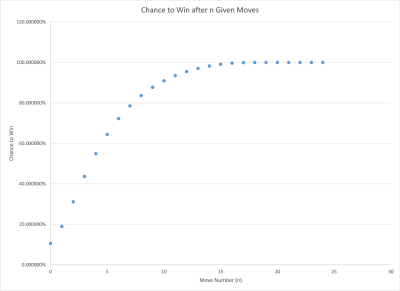Elevens

Elevens is a solitaire card game using a standard 52-card deck.[1] Cards are placed in a 3x3 grid, and pairs of cards which add up to eleven (5 and 6; 4 and 7; 3 and 8; 2 and 9; Ace and 10) are covered up; face cards (J, Q, K) may be eliminated in a set of three cards consisting of one Jack, one Queen and one King regardless of suit. If all cards are covered up the game is won; if there are no more pairs of cards that add up to eleven, the game is lost. An individual game of elevens is a game of pure chance, except for the small element of skill involved in spotting the pairs; the skill and strategic interest comes in not shuffling the cards at the end of each game, but instead collecting them up in order.
Scoring
If at least 20 cards (including the original 9) are placed, score 1 point. If at least 40 cards are placed, score a second point. If all 52 cards are placed, score 3 points for the game.
If any three cards of a certain rank are visible (i.e. at the top of their respective piles) at any one time during play along the same row, column, or diagonal, score 1 extra point. If all four cards of a certain rank are visible, score 1 extra point. Of course, you can score 2 points for all four cards of a rank being visible at one time, if three of them are along the same row, column, or diagonal. This extra scoring dramatically increases the skill involved in playing as you need to remember previous and probable cards played.
Statistics

In the side of the page, there are graphs displaying odds of winning and ending the game at specific points. These statistics were made using one billion simulations of randomly shuffled decks. The more important points are:
- The chance you will win any given game of Elevens is ~10.689%.
- The chance the initial draw will have no possible plays is ~8.28%.
- The game will most likely end with a loss after two successful eliminations of cards, with a ~12.52% chance of occurring.
- After 4 successful eliminations, the game will most likely result in a win, with a ~54.93% likelihood.
- Out of a billion trials, less than 50 (41) of them resulted in the game being lost after 19 successful eliminations. That's a 0.0000041% chance!